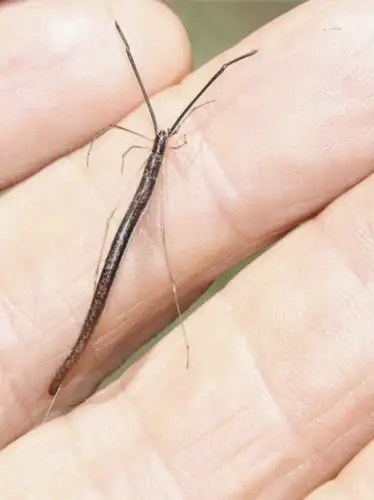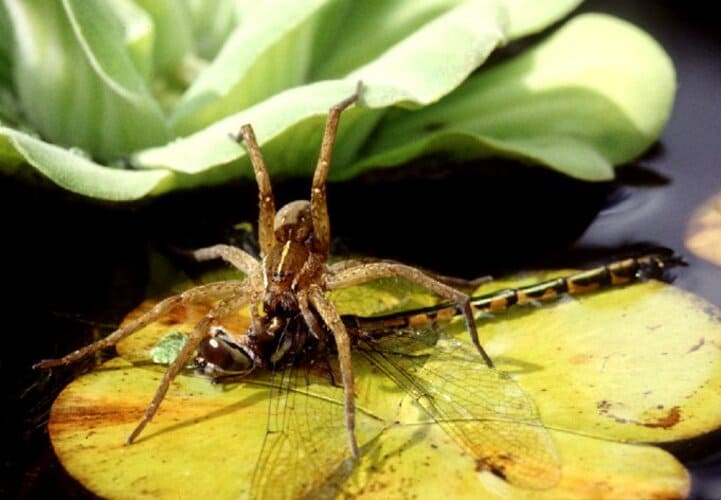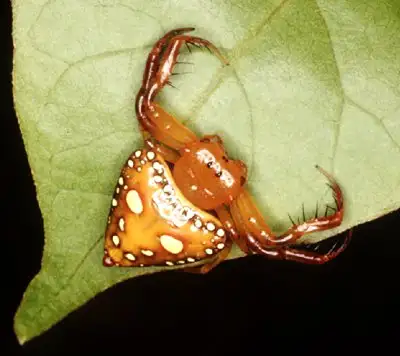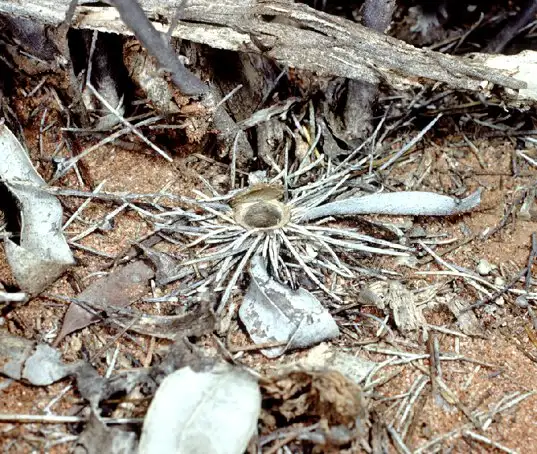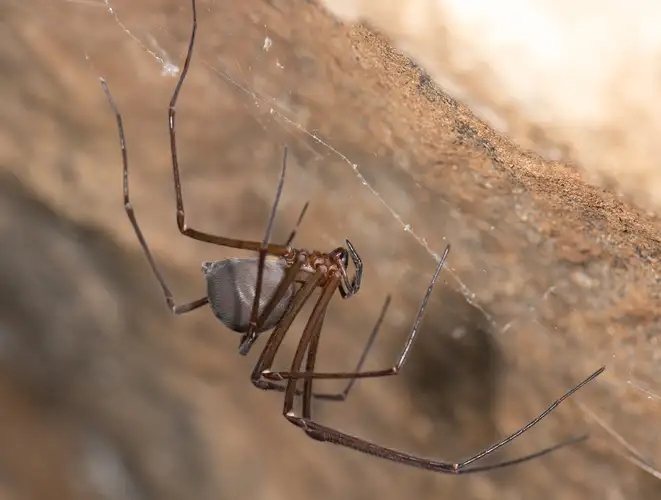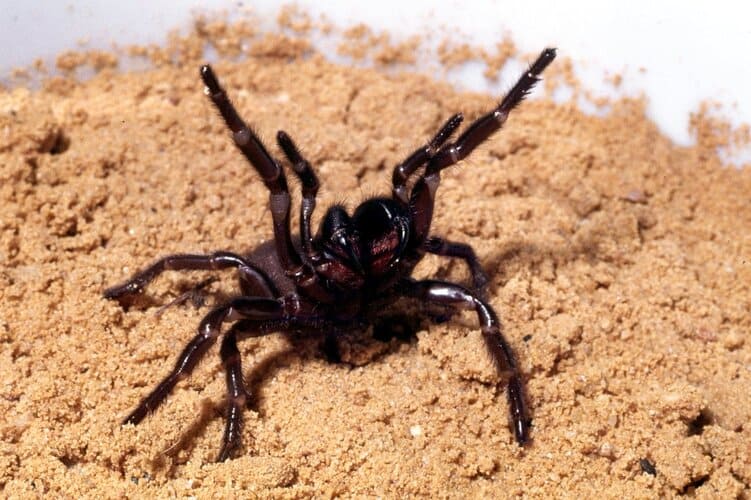Two-spined Spider
IUCN
LCBasic Information
Scientific classification
- name:Two-spined Spider
- Scientific Name:Poecilopachys australasia (Griffith & Pidgeon, 1833)
- Outline:Arthropoda
- Family:Araneidae Poecilopachys
Vital signs
- length:Females about 8 mm in body length; males about 2.5–3 mm; a small orb-weaving spider
- Weight:Very light-bodied, typically only tens of milligrams depending on size and condition
- lifetime:Estimated around one year, with some individuals surviving beyond a single breeding season in mild climates
Feature
Small nocturnal orb-weaver with two horn-like spines on the female’s abdomen; builds a wheel-shaped web at night and eats it again before daybreak.
Distribution and Habitat
Native to eastern Australia and introduced to New Zealand; common in gardens, orchards and urban plantings, especially on citrus trees and other shrubs where night-flying insects are abundant.
Appearance
Brightly coloured female with yellow-olive abdomen, two white horn-like spines and cream, red-brown markings; much smaller, dull-coloured males without obvious spines.
Details
The Two-spined Spider is the common name for Poecilopachys australasia, a small, brightly coloured orb-weaver famous for the two horn-like projections on the back of the adult female’s abdomen. It belongs to the family Araneidae and is native to Australia, but has become well established in New Zealand and some nearby regions.
Taxonomy & Names
Common names: Two-spined Spider
Scientific name: Poecilopachys australasia (Griffith & Pidgeon, 1833)
Family: Araneidae (orb-weaving spiders)
Genus: Poecilopachys
Appearance
The Two-spined Spider is highly distinctive, especially the adult female:
Body size: females are about 8 mm long, while males are only about 2.5–3 mm in body length;
Two “spines”: the female has two prominent white, horn-like projections on the upper surface of the abdomen, which give the species its common name;
Colour pattern: the abdomen is typically yellow to olive with pale bands and reddish markings, forming a striking enamel-like pattern; the front often has a broad cream or yellow band, and the rear may show a chevron;
Male appearance: males are much smaller and more subdued in colour, lacking the conspicuous spines and bright pattern, and were once mistaken for a different species.
The overall effect is that of a small, rounded spider with a colourful, “armoured” abdomen, making it a favourite subject for nature photography.
Distribution & Habitat
Poecilopachys australasia is native to eastern Australia and has been recorded in New Zealand since the early 1970s, where it has spread through much of the North Island and parts of the South Island.
Typical habitats include:
Urban and suburban gardens and orchards, especially on citrus trees and other shrubs;
Roadside plantings, shelter belts and landscaped areas;
Other trees and bushes where night-flying insects are common.
By day, females are often found hiding on the undersides of leaves, where their colours and markings help them blend into the foliage.
Behaviour & Web-building
The Two-spined Spider is a nocturnal orb-weaver:
During the day it rests motionless on the underside of leaves or in foliage, relying on camouflage;
After dark it emerges to construct a wheel-shaped orb web between twigs and leaves to catch flying insects;
Towards morning, the spider typically consumes the entire web, recycling the silk proteins before returning to its daytime hiding place.
Despite its small size, the Two-spined Spider can capture moths and other insects several times larger than itself, demonstrating the efficiency of its orb web.
Diet & Ecological Role
The diet of the Two-spined Spider consists mainly of nocturnal flying insects:
Small and medium-sized moths;
Flies, midges and other dipterans attracted to lights or blossoms;
Various other flying insects that collide with the web.
In gardens, orchards and urban green spaces, these spiders contribute to the natural control of insect populations, and are generally regarded as beneficial predators.
Reproduction & Egg Sacs
Females produce spindle-shaped, papery brown egg sacs that are usually attached to leaves or twigs in sheltered positions. The female often stays nearby, guarding the sac. Spiderlings hatch inside and remain clustered for a time before dispersing to build their own small webs.
Venom & Medical Significance
The Two-spined Spider is considered harmless to humans: it is small, non-aggressive and rarely bites people. If a bite does occur, available reports indicate that effects are limited to local pain, redness or mild swelling in most cases.
As with other small orb-weavers, standard first aid involves washing the bite area and monitoring for any unusual symptoms. Serious reactions are extremely rare, but medical advice is recommended if strong or persistent symptoms develop, especially in children or allergy-prone individuals.
Interactions with People
Because of its striking colours and unusual double spines, the Two-spined Spider is often noticed by gardeners and nature enthusiasts. In most circumstances it is best simply to leave the spider undisturbed, as it helps to reduce numbers of moths and other flying insects.
If a web is in an inconvenient place, the spider and its web can usually be relocated gently to another branch or shrub rather than destroyed, avoiding the need for insecticides and preserving a useful garden predator.
FAQ
Q1. Is the Two-spined Spider dangerous to humans?
No. It is regarded as harmless to people. Bites are rare and usually cause only minor, short-lived local discomfort.
Q2. Why is it called the “Two-spined” Spider?
The adult female has two prominent white, horn-like projections on the back of the abdomen. These “spines” are the origin
of the English name and help to distinguish this species from other small orb-weavers.
Q3. Where am I most likely to find this spider?
In many areas it is commonly found on citrus trees and other garden shrubs, hiding on the undersides of leaves by day and
building a small orb web at night.
Q4. Does it help control pests in the garden?
Yes. By capturing moths and other flying insects, the Two-spined Spider acts as a natural predator and can contribute to
reducing numbers of potential pest species.


